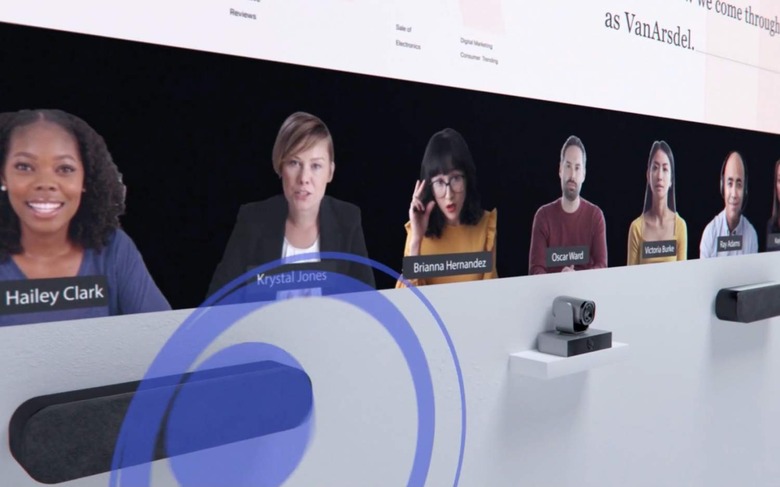Microsoft's Hybrid Office Vision Involves Big Faces And Vaccine Verification
The future of video meetings is your face life-sized on a bigger display, spatial audio to give you a more defined position in the room, and a recognition, Microsoft predicts, that hybrid workplaces will be the status-quo even as the pandemic pans out. The software giant – which just happens to offer its own, high-tech meeting solution, in the shape of Microsoft Teams Rooms – has been setting out its vision of the future of meetings, and it's more than just huddling around a laptop while peering into a 720p webcam.
"Hybrid work represents the biggest shift to how we work in our generation," Satya Nadella, CEO of Microsoft, says of the evolving workplace. "And it will require a new operating model, spanning people, places, and processes."
The challenge, Nadella highlights, is that Microsoft's research indicates people both want to stick with the more flexible remote work possibilities that became commonplace in certain industries during the pandemic, but at the same time want more in-person collaboration options. The conclusion, as Microsoft sees it, is a more advanced communication system that better blurs the lines between who is in the room and who is remotely joining it.

Microsoft Teams Rooms, therefore, will be getting a number of upgrades. For a start there'll be bigger displays – potentially using one or more projectors rather than a screen – to fill the room with a digital window to both Teams chat and workspaces, and participants. However what's arguably more interesting is how Microsoft hopes to give those participants a more physical place in the room.
First, it aims to make their faces life-size. While staring at yourself during daily video calls may have been linked with so-called "Zoom fatigue," having a bigger representation of the people you're talking to – that matches the scale of any other people people in the room with you – helps make them feel more real and present, Microsoft argues. Spatial audio, meanwhile, will help pinpoint their location in the room, linking it with their position on the display.
More advanced microphone arrays built into the ceiling will help on the other end of audio, making voice pickup clearer and trimming background noise. Tracking cameras, meanwhile, will automatically focus on participants.
Clearly, all this depends on space and budget. Teams Rooms aren't cheap to outfit, with even simple systems including speakers, microphones, and a camera coming in at four-figures. It's possible to spend considerably more to outfit a room more in keeping with the way that Microsoft envisages the platform evolving.
Smaller spaces, though, can also benefit from some of the same technologies. "We are installing cameras at eye level for participants to maintain eye contact," Nadella says of Microsoft's own smaller focus rooms, "and will incorporate spatial audio so voices come from the specific person speaking in the gallery view."
Perhaps what will be most frequently seen, however, are systems that Microsoft will be including into its Return to Workplace app. Soon that will be upgraded with support for verifying vaccine status and recent COVID-19 test results, Nadella reveals. Obviously whether that gets used will be down to individual businesses.
